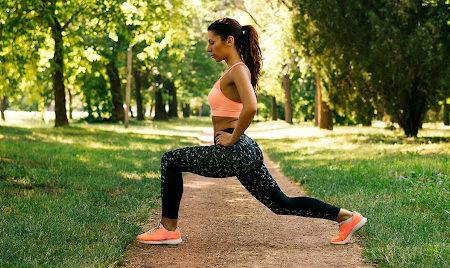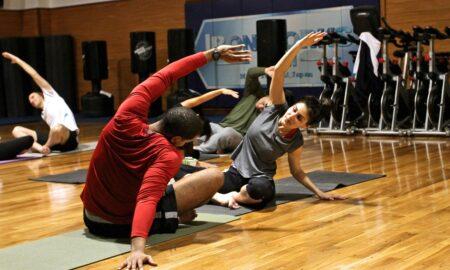There’s a lot of confusion about the meanings of anabolism and catabolism. Bodybuilders commonly believe that anabolic means good and catabolic means bad; however, nothing could be further from the truth. In order to understand what really puts the body in a maximum anabolic state, you need some understanding of the anabolic and catabolic forces that regulate your life.
Anabolism and Catabolism
Biologically, your life is defined by your metabolism. The ability to turn matter into energy and energy back into matter is what makes living creatures superior to any machine. Your body is programmed to re-create itself every minute of your life’material is constantly moving in and out of it. The process that builds material is called anabolism, and the process that breaks down material and removes it is called catabolism, and the balance between the anabolic and catabolic forces is what regulates your bodyfat, muscle mass, rate of aging and overall health. Each of those processes is critical to survival, and as you’ll see shortly, anabolism and catabolism go hand in hand, activating and making each other more effective.
Negative Feedback Control
Like many other forces that are necessary to sustain life, anabolic and catabolic processes are regulated in the body through a negative feedback mechanism, which is a most efficient biological process that keeps the balance between two opposing forces. Many, if not most, of the body’s life functions, such as the regulation of blood sugar, the stabilization of blood pressure, the assimilation of nutrients and the activation of hormone synthesis, are based on negative-feedback control. For example, insulin and glycogen are antagonistic hormones that regulate blood sugar levels. Insulin’s actions that reduce blood sugar activate glucagon actions that raise it.
Everything in life occurs in cycles. Every process has its own duration. The body maintains homeostasis through a negative feedback control system that constantly cycles between antagonistic forces.
Hormonal levels, cellular nucleotide levels and overall nutritional states are all factors that dictate whether your body builds and repairs tissue or it destroys, recycles or removes material. Resistance training is actually a catabolic activity that tears down muscle fibers. That triggers an anabolic process by which the body repairs and builds stronger muscle to be able to handle more stress (resistance) through adaptation.
Unfortunately, just the opposite may occur when people maximize their athletic skills. Trained bodybuilders and powerlifters who have already reached a peak of muscle development’that is, their peak anabolic state’are most prone to hit a point at which they fail to gain additional muscle or strength. More often than not athletes who have reached such a plateau suffer from loss of muscle mass and impaired performance. Many feel lethargic and weaker in spite of following the same diet and exercise routine they used before the crisis.
What many athletes don’t realize is that when the body reaches a peak anabolic state, its catabolic activity increases as it tries to shrink to its normal size. You can, however, activate a most powerful anabolic state by following a special dietary cycle that may keep you from hitting a wall in your program.
Undereating Turns On the Anabolic Switch
In order to maximize growth, you must activate hormones that stimulate growth. That hormonal stimulation is the switch that signals your body to activate a powerful anabolic state.
Fasting or undereating gives the body a starvationlike signal that it perceives as catabolic. In order to compensate for the missing food and protect itself from a metabolic breakdown, the body will boost its anabolic activities. Protein assimilation significantly increases to ensure maximum protein utilization from minimum food. On the cellular level a powerful factor, cyclic AMP, is activated. Among its numerous actions cAMP sets off steroid hormone synthesis by stimulating hormones that are secreted by the hypothalamus and pituitary glands, a process that’s likely a primal adaptation mechanism that has to do with human survival.
Ancient people used to cycle between periods of undereating, when food was scarce, and periods of overeating, when food was abundant. The human body adapted over many years of evolution to withstand periods of undereating and overeating. When you undereat, you trigger a primal biological force that helps your body adapt to food deprivation and better survive in times of hardship. To take advantage of this powerful dietary cycle, however, you must fully control the undereating.
Periodic Undereating and Overeating
A periodic cycle of undereating and overeating forces your body to activate and reactivate anabolic states, in which it’s pushed to repair, build, rejuvenate and improve on itself. The body will activate an anabolic state when you undereat or fast and maximize its growth actions when you overeat. Undereating and overeating cycles can last between one and seven days per week. That method of eating forces the body to detoxify itself. Liver detoxification is critical for proper steroid hormone regulation and maximum growth.
Of course, undereating is a relative matter. It generally means eating less than you usually eat. For the purpose of activating growth potential, it means limiting your diet to mostly low-glycemic fruits and vegetables or their juices. If needed, you can have a small amount of protein.
You can have coffee, tea or unsweetened hot chocolate. You must at all times avoid eating anything that contains processed carbs or sugar to prevent an insulin spike that might inhibit the activation of desirable growth-stimulating cellular factors. In order to be effective, the undereating phase should last between 10 and 16 hours. You should not undereat for more than 18 hours at a time. Otherwise, you can subject your body to metabolic decline and muscle waste.
Overeating is also relative. What’s considered overeating to one person may be normal eating to another. It refers to eating more than you usually eat, and you should eat from all food groups. Start with protein and veggies that your body needs most and then move on to carbs. Make sure you eat complete-protein foods that supply your body with all of the essential amino acids. Include essential oils that are rich in omega-3 and omega-6 fatty acids. Essential fatty acids (EFAs) are critical for all life functions, including cell growth, cell membrane formation and hormone synthesis. Periodic overeating signals your body to expect big meals, which in turn force the body to accelerate its metabolic rate to burn all those calories. Over time cycles of undereating and overeating may help boost your metabolism so you’ll be able to take in even more food to further accelerate growth without gaining fat.
A good example of the undereating-and-overeating phenomenon is the competitive bodybuilder. Many bodybuilders who go through a grueling diet before a show actually sacrifice muscle mass in order to look lean and defined onstage. To their surprise, they really look their best on the day after the contest. That’s because the body goes through an undereating phase when you’re on a low-carb precontest diet and is stimulated to activate growth potential that finally occurs right after the competition’when bodybuilders allow themselves to eat to their heart’s content. The competition cycle’undereating followed by overeating’forces the body to reach a maximum anabolic state, and that’s exactly what happens the following day. Many champion bodybuilders are already aware of that phenomenon and have a light carb-loading meal a few hours before competing to avoid looking flat and get a great pump.
Now, I’m not suggesting you change the way you eat or train; however, if you reach a plateau in your performance or if you’re curious enough to try something different, this cycle may be rewarding. You may also want to try exercising on an empty stomach to flip the anabolic switch.This forces your body to burn fat and inhibit fat gain. People who exercise first thing in the morning or at any time on an empty stomach are putting themselves in a win-win situation. In order to maximize the impact of that technique and take advantage of the anabolic state that occurs after a workout, however, you need to follow it with a postworkout meal that supplies all the right nutrients the body needs.
Some Practical Advice
Here are some practical tips to help you get the most out of this anabolic eating cycle:
1) Undereat from morning to evening; overeat at night. You undereat or fast from the time you wake up until your evening meal. When you overeat at night, start with veggies and protein plus EFAs. Finish with carbs. Follow that dietary cycle on the days when you work out, and make sure you do your workout during the undereating phase.
2) Cycle between days of low carbs and days of high carbs. On a low-carb day limit your carbs to those naturally derived from plants (i.e., broccoli, cauliflower, pumpkin, butternut squash). Minimize your fruit or fruit juice consumption during the undereating phase. Instead, have veggie juice. At night you can increase your protein and fats (EFAs or olive oil).
On a high-carb day have pasta, rice or oatmeal with your protein. Do not eat carbs alone. Always mix carb foods with protein. On high-carb days you can reduce your protein intake. Use instinct to choose the ratio of carbs to protein. It could be somewhere between 1-to-1 and 1-to-1.5. On high-carb days avoid anything sweet. The combination of sugar and high starch may cause an insulin spike, blood sugar fluctuation and undesirable fat gain.
3) Cycle between days of undereating and days of overeating. On days of undereating you eat one meal per day at night, which is a normal meal, thus decreasing overall food consumption. Make sure, however, that you take in a minimum of whole protein and between two to three tablespoons of EFAs. The amount of food depends on your bodyweight. On days of overeating you undereat during the day and overeat at night’the same as in item 1 above.
In general, use your common sense. Your specific needs are unique, so experiment with the suggested dietary cycles to determine what works best for you.
Editor’s note: Ori Hofmekler is the author of the books The Warrior Diet and Maximum Muscle & Minimum Fat, published by Dragon Door Publications (www.dragondoor.com). For more information or consultations, contact him at [email protected], www.warriordiet.com or by phone at 1-866-WAR-DIET. IM




















You must be logged in to post a comment Login